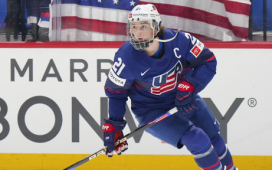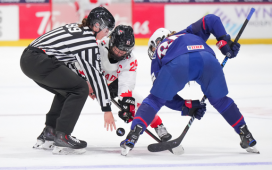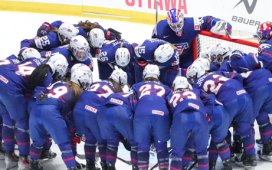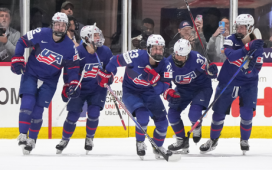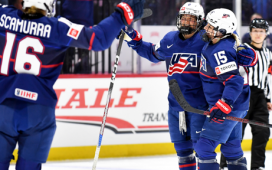Looking at all the Stanley Cup winners from the salary-cap era, is there a strong correlation between getting hot over the final 20 regular-season games and capturing a championship?

So long, trade deadline. Hello, stretch run. Every NHL team’s roster is set for the season’s final leg, give or take an injury recovery or AHL call-up. It’s the time of year when we start doing math about games in hand and checking daily playoff odds.
The stretch run has always been important, as it decides a large percentage of the league’s playoff spots, but it has taken on greater weight in this era of unprecedented parity. When the 2016-17 Nashville Predators can reach the Stanley Cup final as a No. 16 overall seed and the 2018-19 St. Louis Blues can hoist the chalice months after sitting 31st overall in the standings, “Just get in” means more than it used to. Any team has a chance.
That’s why it feels like it’s crucial to peak late in a season, just as the Blues did last year. But is that really true? Is the eventual Stanley Cup champion usually the team that “puts it all together” and “peaks when it matters” in the final 15 to 20 games?
Let’s put the popular theory to the test by examining all 14 champions of the salary-cap era – minus the 2012-13 Chicago Blackhawks. They played a 48-game season, which was like one big stretch run, so they’re tougher to evaluate in this exercise. We’ll look at the 13 cap-era winners who played 82-game seasons.
• First off, not surprisingly, almost every cap-era Cup champ was firmly established as a juggernaut before the stretch run. Nine of 13 had points percentages of .600 or higher in games 1 to 62 of the season. Three hummed along north of .700. The only teams that really had work to do to even make the playoffs in the final 20 games were the 2009 Pittsburgh Penguins (.532), 2012 Los Angeles Kings (.548) and 2019 Blues (.581). All three of those teams replaced their coaches in-season and thus had to play catchup. So “peaking” seems to matter most for the teams making extreme transitions from old to new coaching systems.
• Seven of 13 teams posted higher points percentages in the 20-game stretch run than they did in the first 62 games. That’s a pretty close split, suggesting the correlation between peaking and winning a Cup is merely mild, but when every one of these teams was good to begin with, it can be tough to top a strong start. Perhaps more telling: Eleven of 13 teams posted points percentages better than .600 in the final 20-game stretch of the season. Four teams topped .700, and two teams crushed it at .800 or better. In other words, no team bombed down the stretch. The closest was Carolina in 2006, which stumbled to 9-8-3 (.525) in the final 20 games. Every other team maintained a points percentage of .575 or higher.
• The average points percentage in games 1 to 62 among the 13 champs: .633. For perspective, a .633 points percentage would place a team seventh overall in the current standings. The average points percentage among the 13 champs in games 63 to 82: .671, which would rank third overall in the NHL.
While a couple piping-hot Penguin teams from 2009 and 2016 spike the record a bit, the Cup champs do on average have a better record in the final 20 games of the season. It’s also worth noting that the champs having excellent records before and after the stretch run, however. Maybe that’s the most important finding: great teams are consistent year round, good for the season’s first three quarters and good afterward. A team doesn’t necessarily have outdo itself by a wide margin in the final 20 games, but there seems to be a marked correlation between playing good hockey leading into the playoffs and winning the Cup. As strong dress rehearsal means a strong performance in this case. The trend suggests any contender who slips and plays sub-.500 hockey down the stretch won’t win the Cup.
Not that a team has to go for broke year-round and try to lap the field in the regular season, of course. Only one of the 13 Cup-champion teams who have played 82-game seasons in the cap era won the Presidents’ Trophy for the league’s best record. Even more remarkably, only one was even the top seed in its conference.
If you’re making a Stanley Cup prediction for this spring, then: look for a team that played good hockey for 62 games followed by great hockey for 20.
Want more in-depth features, analysis and an All-Access pass to the latest content? Subscribe to The Hockey News magazine.


